Advertisements
Advertisements
प्रश्न
Answer in brief.
Why should a Carnot cycle have two isothermal two adiabatic processes?
उत्तर
There are basically two processes:
- Exchange of heat (steps A to B and C to D). For this to be reversible, the heat exchange must be isothermal. This is possible if the working substance is at the temperature TH of the source while absorbing heat. The working substance should be at the temperature of the cold reservoir TC while rejecting the heat.
- Work done (steps B to C and D to A). For work done to be reversible, the process should be adiabatic.
Thus, the cycle includes two isothermal and two adiabatic processes for maximum efficiency.

Carnot cycle
APPEARS IN
संबंधित प्रश्न
A thermodynamic system is taken from an original state to an intermediate state by the linear process shown in Figure

Its volume is then reduced to the original value from E to F by an isobaric process. Calculate the total work done by the gas from D to E to F
Give an example of some familiar process in which heat is added to an object, without changing its temperature.
For work done to be reversible, the process should be ______
Heating a gas in a constant volume container is an example of which process?
Draw a p-V diagram showing positive work with varying pressure.
Differentiate between the reversible and irreversible processes.
An ideal gas of volume 2 L is adiabatically compressed to (1/10)th of its initial volume. Its initial pressure is 1.01 x 105 Pa, calculate the final pressure. (Given 𝛾 = 1.4)
Explain work done during a thermodynamic process.
Explain thermodynamics of the adiabatic process.
When a cycle tyre suddenly bursts, the air inside the tyre expands. This process is ____________.
Draw the PV diagram for the isothermal process.
What is a cyclic process?
What are the limitations of the first law of thermodynamics?
A thermodynamic system undergoes cyclic process ABCDA as shown in the figure. The work done by the system is ______

Two identical samples of a gas are allowed to expand (i) isothermally (ii) adiabatically. Work done is ____________.
Assertion: Equal volumes of monatomic and polyatomic gases are adiabatically compressed separately to equal compression ratio `("P"_2/"P"_1)`. Then monatomic gas will have greater final volume.
Reason: Among ideal gases, molecules of a monatomic gas have the smallest number of degrees of freedom.
We consider a thermodynamic system. If `Delta"U"` represents the increase in its internal energy and W the work done by the system, which of the following statements is true?
Ideal gas for which 'ϒ' = 1.5 is suddenly compressed to `1/4`th of its initial volume. The ratio of 4 the final pressure to the initial pressure is ______.
`(ϒ = "C"_"p"/"C"_"v")`
The work done on the system in changing the state of a gas adiabatically from equilibrium state A to equilibrium state B is 22.4 J. If the gas is taken from state A to B through another process in which the net heat absorbed by the system is 15.5 cal, then the net work done by the system in the latter case is ______.
( l cal = 4.2 J)
Which of the following processes is reversible?
Consider P-V diagram for an ideal gas shown in figure.
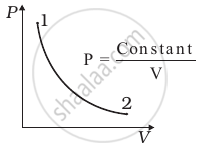
Out of the following diagrams (figure), which represents the T-P diagram?
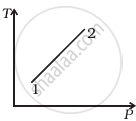 (i) |
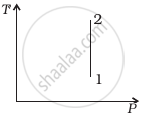 (ii) |
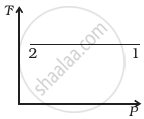 (iii) |
 (iv) |
In the figure shown here, the work done in the process ACBA is ______.
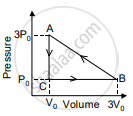
Explain the thermodynamic process.
In a cyclic process, if ΔU = internal energy, W = work done, Q = Heat supplied then ______.
